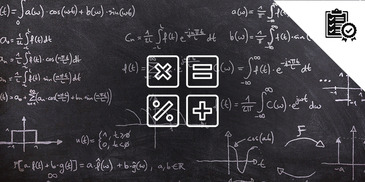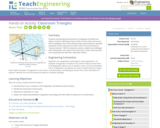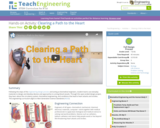
In this activity, students are asked to classify functions as even, odd, or neither based on the graph of the function.
- Subject:
- Mathematics
- Material Type:
- Lesson Plan
- Provider:
- Texas Instruments
- Date Added:
- 08/07/2023


In this activity, students are asked to classify functions as even, odd, or neither based on the graph of the function.

Given a set of numbers, learn how to tell which are rational and which are irrational. [2:17]
Khan Academy learning modules include a Community space where users can ask questions and seek help from community members. Educators should consult with their Technology administrators to determine the use of Khan Academy learning modules in their classroom. Please review materials from external sites before sharing with students.

This video tutorial describes how to classify quadrilaterals using key characteristics such as parallel sides and right angles. [4:27]

Demonstrates how to decide which quadrilaterals match a set of given properties. [2:28]
Khan Academy learning modules include a Community space where users can ask questions and seek help from community members. Educators should consult with their Technology administrators to determine the use of Khan Academy learning modules in their classroom. Please review materials from external sites before sharing with students.

Quadrilaterals are explored in this video lesson. The tutorial describes the characteristics of various quadrilaterals. Students can check their understanding with an assessment. [6:17]

Explains how to classify 2D shapes based on the properties of their sides and angles. [2:15]
Khan Academy learning modules include a Community space where users can ask questions and seek help from community members. Educators should consult with their Technology administrators to determine the use of Khan Academy learning modules in their classroom. Please review materials from external sites before sharing with students.

Demonstrates how to find what 2D shape matches a set of properties. [3:37]
Khan Academy learning modules include a Community space where users can ask questions and seek help from community members. Educators should consult with their Technology administrators to determine the use of Khan Academy learning modules in their classroom. Please review materials from external sites before sharing with students.

Discusses the different types of triangles and their angles. [6:00]
Khan Academy learning modules include a Community space where users can ask questions and seek help from community members. Educators should consult with their Technology administrators to determine the use of Khan Academy learning modules in their classroom. Please review materials from external sites before sharing with students.

This video lesson describes and provides examples of right, acute, and obtuse triangles. Students can check their understanding with an assessment. [2:24]

This video lesson shows examples of classifying triangles by their angle measurements. Students can check their understanding with an assessment. [3:54]

Explains how to classify a triangle just by knowing the angle sizes. [5:30]
Khan Academy learning modules include a Community space where users can ask questions and seek help from community members. Educators should consult with their Technology administrators to determine the use of Khan Academy learning modules in their classroom. Please review materials from external sites before sharing with students.

Students use bearing measurements to triangulate and determine objects' locations. Working in teams of two or three, they must put on their investigative hats as they take bearing measurements to specified landmarks in their classroom (or other rooms in the school) from a "mystery location." With the extension activity, students are challenged with creating their own maps of the classroom or other school location and comparing them with their classmates' efforts.

Following the steps of the engineering design process and acting as biomedical engineers, student teams use everyday materials to design and develop devices and approaches to unclog blood vessels. Through this open-ended design project, they learn about the circulatory system, biomedical engineering, and conditions that lead to heart attacks and strokes.

Encuentre lo que es similar y lo que es diferente mientras exploran objetos.

Students calculate elapsed time using analog clocks. Included in this lesson are a detailed plan, clock template, and video of students making their clocks.

Students analyze international oil consumption and production data. They make several graphs to organize the data and draw conclusions about the overall use of oil in the world.

This task assesses a student's ability to use the addition rule to compute a probability and to interpret a probability in context.

Students are exptected to identify the slope of the line with the unit rate in this real world problem.

Using this tutorial, you'll learn how to solve absolute value equations. View step-by-step solutions and video explanations of example problems, and solve practice questions at the end.

Rational expressions have never been so easy! Use this site to learn how to add and subtract them with ease and confidence. And common denominators? No Problem! Great practice problems are included to see how much you've learned.